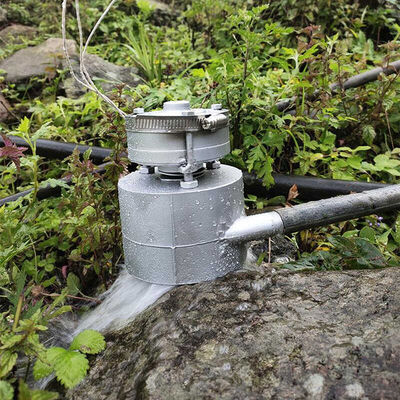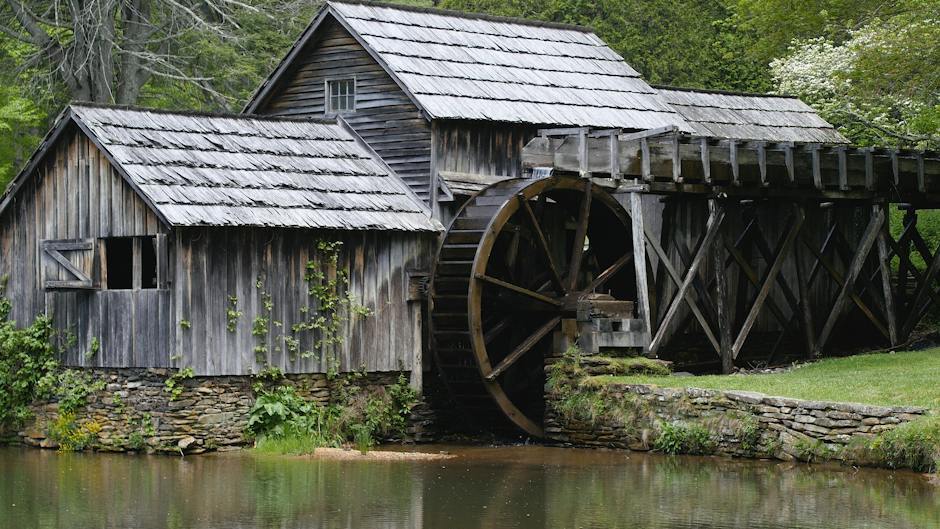
Understanding the Distinction: Water Wheel vs. Water Turbine
In the realm of hydropower, two primary devices stand out as key components in harnessing the energy of flowing water: the water wheel and the water turbine. While both serve the fundamental purpose of converting water's kinetic energy into mechanical energy, they differ significantly in design, functionality, and historical context. Let's delve into the dissimilarities between these two fascinating pieces of engineering.
Water Wheel: Tapping Ancient Power

The water wheel is an age-old invention, tracing its roots back thousands of years. Historically, water wheels have been pivotal in various applications, from grinding grain to powering early industrial machinery. The fundamental principle behind a water wheel is simple yet effective: it utilizes the force of flowing or falling water to turn a wheel, which, in turn, drives machinery or generates electricity.
Water wheels come in various designs, with the overshot, undershot, and breastshot configurations being the most common. In overshot water wheels, water is directed onto the wheel's paddles from above, harnessing the energy of both the weight and velocity of the falling water. Undershot wheels, on the other hand, are turned by the flow of water passing beneath them, while breastshot wheels are driven by water hitting them around mid-height.
While water wheels have been remarkably efficient in their simplicity, they do have limitations. Their efficiency is largely dependent on the volume and velocity of the water source, and they are generally less efficient than modern turbines. Additionally, their large size and weight make them less practical for many contemporary applications.
Water Turbine: Modernizing Hydropower
In contrast to the water wheel's historical significance, the water turbine represents a more modern approach to hydropower generation. Water turbines have evolved over centuries of technological advancement, offering improved efficiency, scalability, and versatility compared to their predecessors.
Water turbines operate on the same basic principle as water wheels, but with notable differences in design and efficiency. Instead of a wheel with paddles, turbines feature blades or buckets arranged around a central shaft. As water flows over or through these blades, it causes the shaft to rotate, generating mechanical energy.
There are several types of water turbines, including impulse turbines and reaction turbines. Impulse turbines are primarily driven by the force of water impacting the blades, often at high speeds and pressures. Examples include Pelton and Turgo turbines, which are particularly suitable for high-head, low-flow applications. On the other hand, reaction turbines operate by utilizing both the pressure and kinetic energy of the water as it flows over the blades. Francis and Kaplan turbines are common examples of reaction turbines, ideal for low to medium-head installations with varying flow rates.
One of the significant advantages of water turbines over water wheels is their higher efficiency. Turbines can capture more of the available energy in water, thanks to advanced designs and materials. They also offer greater flexibility in terms of installation, allowing for smaller-scale projects and integration into existing infrastructure.
Conclusion: Blending Tradition with Innovation
While both the water wheel and the water turbine share the objective of harnessing water's energy, they represent different eras of engineering and technological advancement. The water wheel, with its storied history and timeless simplicity, laid the foundation for human ingenuity in tapping into hydropower. On the other hand, the water turbine embodies modern innovation, offering enhanced efficiency and adaptability to meet the demands of contemporary energy needs.
In the ongoing pursuit of sustainable energy solutions, it's essential to recognize the contributions of both these remarkable devices. Whether preserving the heritage of water wheels in cultural contexts or embracing the efficiency of water turbines in modern power generation, understanding the differences between the two allows us to appreciate the evolution of hydropower technology and its vital role in shaping our energy landscape.
What do you think? Leave a comment.